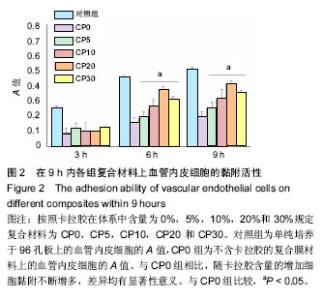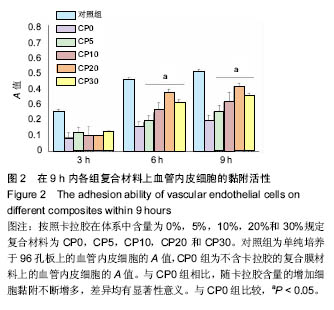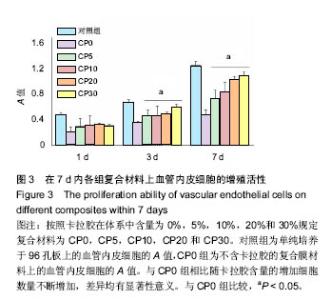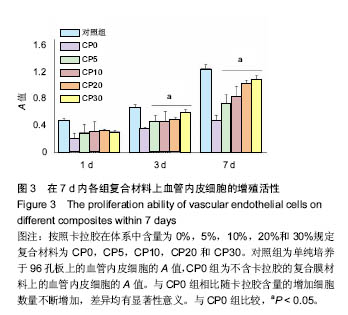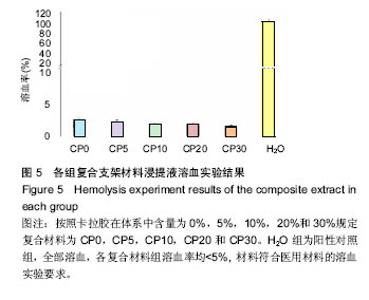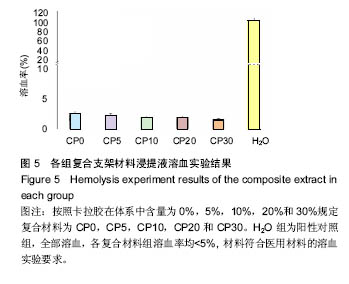| [1]Kudo K, Ishida J, Syuu G,et al.Structural changes of water in poly(vinyl alcohol) hydrogel during dehydration. J Chem Phys. 2014;140(4):044909.[2]徐敬,赵建宁,徐海栋,等.关节软骨损伤修复研究进展[J].临床与病理杂志, 2015,35(3): 455-461.[3]Furukawa KS, Imura K, Tateishi T, et al.Scaffold -free cartilage by rotational culture for tissue engineering.J Biotechnol. 2008; 133(1): 134-145.[4]Simon TM,Jackson DW.Articular cartilage:injury pathways and treatment options.Sports Med Arthrosc. 2006;14(3): 146-154.[5]Lin HY, Chen HH, Chang SH, et al. Pectin-chitosan-PVA nanofibrous scaffold made by electrospinning and its potential use as a skin tissue scaffold.J Biomater Sci Polym Ed. 2013; 24(4):470-484.[6]Lim KS, Alves MH, Poole-Warren LA, et al. Covalent incorporation of non-chemically modified gelatin into degradable PVA-tyramine hydrogels. Biomaterials. 2013; 34(29):7097-7105.[7]Popa E, Reis R, Gomes M. Chondrogenic phenotype of different cells encapsulated in κ‐carrageenan hydrogels for cartilage regeneration strategies.Biotechnol Appl Biochem. 2012;59(2):132-141.[8]Mihaila SM,Popa EG,Reis RL,et al.Fabrication of endothelial cell-laden carrageenan microfibers for microvascularized bone tissue engineering applications. Biomacromolecules. 2014;15(8):2849-2860.[9]Senel S, Lkinci G, Kas S, et al.Chitosan films and hydmgels of chlorhexidine gluconate for oral mucosal delivery. Int J Pham. 2000;193:197-203.[10]卢璐,吉鸿飞,郭各朴,等.超声增强藻酸钙凝胶支架材料孔隙率的研究[J].物理学报,2015,64(2):024301-024307.[11]Dunne LW, Iyyanki T,Hubenak J,et al.Characterization of dielectrophoresis-aligned nanofibrous silk fibroin-chitosan scaffold and its interactions with endothelial cells for tissue engineering applications. Acta Biomater. 2014;10(8): 3630-3640.[12]Hsieh WC,Liau JJ.Cell culture and characterization of cross-linked poly (vinyl alcohol)-g-starch 3D scaffold for tissue engineering.Carbohydr Polym.2013;98(1):574-580.[13]Reyes R,Delgado A,Solis R,et al. Cartilage repair by local delivery of transforming growth factor-β1 or bone morphogenetic protein-2 from a novel,segmented polyurethane/polylactic-co-glycolic bilayered scaffold. J Biomed Mater Res A.2014;102(4):1110-1120.[14]冀雅铭,崔曼,肖芳,等.果胶在构建多糖-蛋白质细胞外基质纳米复合材料中的作用[J].解剖学杂志,2015,38(1):27-30.[15]Leong KF,Cheah CM,Chua CK.Solid freeform fabrication of three-dimensional scaffolds for engineering replacement tissues and organs.Biomaterials.2003;24(13):2363-2378.[16]Alves MH, Jensen BE, Smith AA,et al.Poly(vinyl alcohol) physical hydrogels: new vista on a long serving biomaterial. Macromol Biosci. 2011;11(10):1293-1313.[17]Bhowmick S, Koul V. Assessment of PVA/silver nanocomposite hydrogel patch as antimicrobial dressing scaffold: Synthesis, characterization and biological evaluation. Mater Sci Eng C Mater Biol Appl. 2016;59:109-119.[18]Bartkowiak A, Hunkeler D.Carrageenan-oligochitosan microcapsules: optimization of the formation process(1). Colloids Surf B Biointerfaces. 2001;21(4):285-298.[19]吴佳奇,刘洋,杨天府,等.多孔聚乙烯醇水凝胶复合物的制备及其生物相容性的初步观察[J].四川大学学报(医学版), 2007; 38(4): 705-708. [20]Popa EG, Gomes ME, Reis RL.Cell delivery systems using alginate--carrageenan hydrogel beads and fibers for regenerative medicine applications. Biomacromolecules. 2011;12(11):3952-3961.[21]Almeida N, Mueller A, Hirschi S,et al.Rheological studies of polysaccharides for skin scaffolds.J Biomed Mater Res A. 2014;102(5):1510-1507.[22]Baker MI,Walsh SP,Schwartz Z,et al.A review of polyvinyl alcohol and its uses in cartilage and orthopedic applications.J Biomed Mater Res B Appl Biomater.2012;100(5):1451-1457.[23]Mihaila SM,Gaharwar AK, Reis RL, et al. Photocrosslinkable kappa-carrageenan hydrogels for tissue engineering applications. Adv Healthc Mater.2013;2(6):895-907. [24]孙路,杨伯光,王永兰,等.壳聚糖-明胶-卡拉胶支架复合人牙龈成纤维细胞的体外研究[J].牙体牙髓牙周病学杂志, 2012;22(6): 323-326.[25]Kale S,Biermann S,Edwards C,et al.Three-dimensional cellular development is essential for ex vivo formation of human bone.Nat Biotechnol.2000;18(9):954-958.[26]He M, Wang Z, Cao Y,et al.Construction of chitin/PVA composite hydrogels with jellyfish gel-like structure and their biocompatibility. Biomacromolecules. 2014;15(9):3358-3365.[27]杨国志,张长成,李振武,等.不同孔径的羟基磷灰石对组织工程骨血管化促进效果的研究[J].重庆医学,2015,44(23):3195-3197.[28]Stocco E, Barbon S,Dalzoppo D,et al.Tailored PVA/ECM Scaffolds for Cartilage Regeneration.Biomed Res Int.2014; 2014:762189. |
